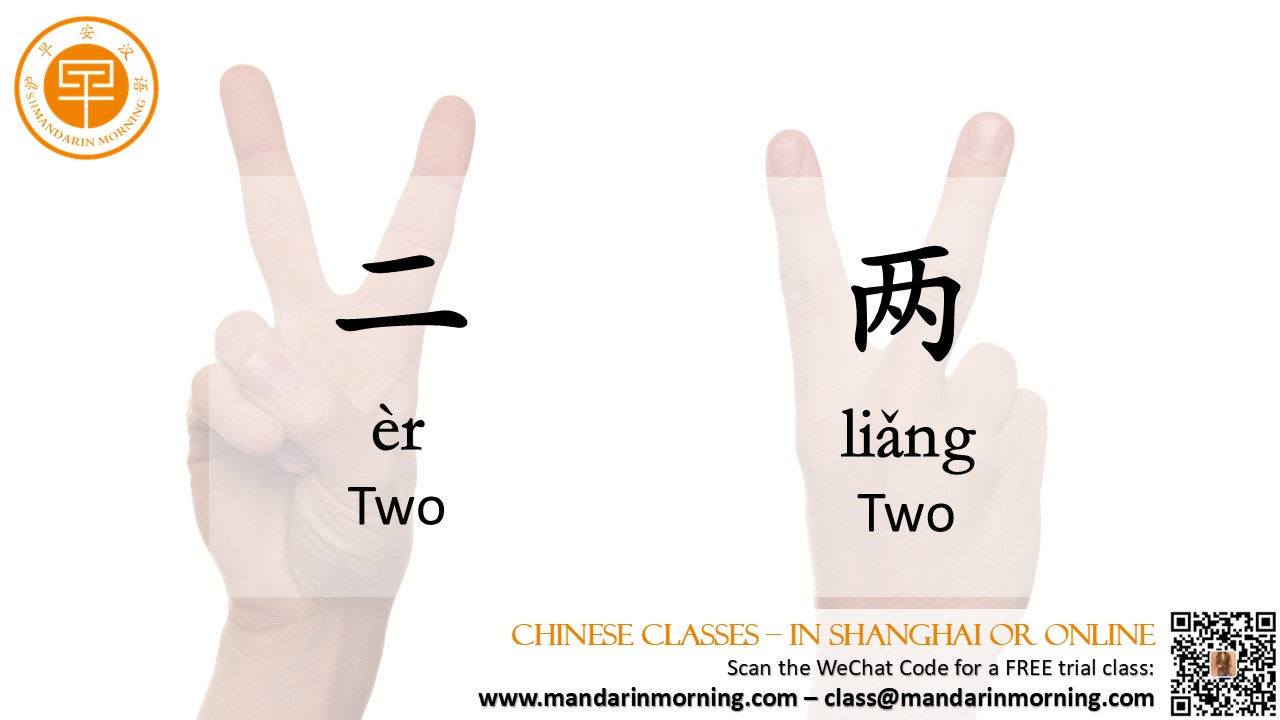| Comparing “èr” and “liǎng” can be confusing at first. How do you tell the difference between 二 (èr) and 两 (liǎng)? When learning Mandarin you might find yourself confused by two translations for the number two. In this article, we will look at when to use 二 (èr) and 两 (liǎng). Let’s take a look as these two characters.  How to Use 二 (èr) The primary use of 二 (èr) is in representing the digit “2.” It’s what you’ll see when counting, giving out a phone number, or doing math. “二 (èr)” is used exclusively for ordinal numbers, such as “二年级 (èr niánjí)” for “grade two” or “二楼 (èr lóu)” for “second floor”. EXAMPLES Counting in Multiples of One or Ten: 二 (èr) - 2 十二 (shí èr) - 12 二十二 (èr shí èr) - 22 十二 块钱 (shí èr kuài qián) - 12 RMB Second: 第二 (dì èr) - second Time: Time can be tricky as “two o’clock and twelve o’clock don’t use the same character. 十二点 (shí èr diǎn) - 12 o’clock How to Use 两 (liǎng) The main use of 两 (liǎng) is used as a quantifier and it often comes coupled with a measure word when quantifying things. EXAMPLES Quantifying Things: 两个人 (liǎng gè rén) - two people 两只猫 (liǎng zhī māo) - two cats Counting in Hundreds, Thousands, Tens of Thousands, etc.: 两百 (liǎng bǎi) - 200 两千 (liǎng qiān) - 2,000 两百二十二 (liǎng bǎi èr shí èr) - 222 Time: 两点钟 (liǎng diǎn zhōng) • two o’clock Comparing “èr” and “liǎng” Can Make Chinese Feel Difficult Learning Chinese can often feel like navigating a maze of intricate nuances and subtle details that trip you up. The grammar rules might feel overwhelming at first but these little details are what gives a language its charm. It’s like solving a puzzle: initially challenging but ultimately satisfying. Once you begin to grasp these elements, you’ll find that they all fit together in a logical and coherent way. The seemingly tricky aspects start to reveal themselves as logical patterns, and the language begins to make sense. |